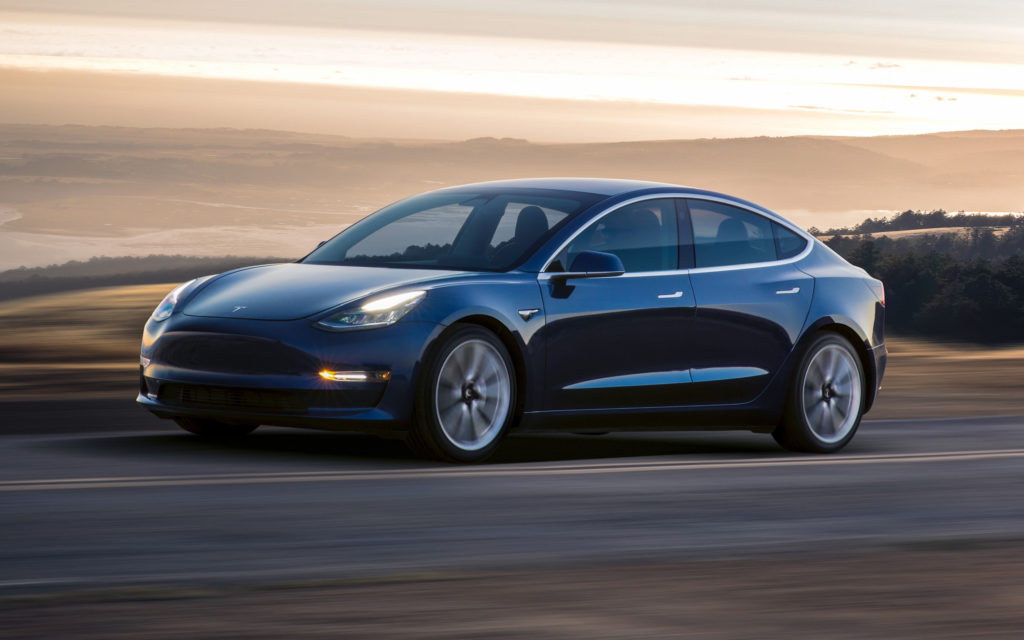 Until this year, Tesla’s electric vehicles have largely been seen as toys for the wealthy and early adoptees. The Model 3 was supposed to change all that.
Until this year, Tesla’s electric vehicles have largely been seen as toys for the wealthy and early adoptees. The Model 3 was supposed to change all that.
Model 3 is the first mass market Tesla, selling for about $35,000. Tesla already has about 435,000 orders, and if you raise your hand today, you can expect to wait until the middle of next year to receive it.
Or maybe longer. That’s Tesla’s big problem. It can’t get the Model 3 out the door of its factory in Fremont, Calif. And that threatens not only Tesla’s reputation, but the future of electric vehicles in general.
Because of its unique market niche, Tesla has always gotten away with things for which other car companies would not get a pass. For one thing, Wall Street has been charmed by its eclectic founder, Elon Musk.
His company appearances and quarterly earnings cars are followed with the cult-like response that greeted Apple and Microsoft through the years. Its market capitalization swelled beyond anything that was supported by its sales performance, vaulting its value past General Motors.
To be sure, Tesla Model S, its $70,000 sedan, has received strong reviews and has a small, but rabid customer base. Model S heralded good things for Model 3.
That makes its current dilemma even more stark. Model 3. Tesla has been honest about its production problems. It told analysts to expect “production hell’ during the first six months of production.
But, Tesla is falling short of even the very modest production targets it set for the car. In August, Musk said Tesla would build 1,300 cars in September, ramping up to 20,000 a month by December.
In a letter to shareholders on Oct. 2, Tesla said there were “no fundamental issues with the Model 3 production or supply chain” and is aware of what needs to be fixed.
It may be aware of what needs to be done, but there’s no evidence that it has the institutional memory to get the production line flowing. (See this Business Insider story for some detail on why the glitches are taking place.)
Major Stakes
Building cars is hard. I’ve visited 100 factories around the world. I have not been to Tesla. However, two of the world’s best car companies — GM and Toyota — built cars in its factory for decades, first GM on its own and then in the New United Motor Manufacturing Inc. joint venture with Toyota.
There are experienced people in the Fremont area, which is near San Jose, who know how to build cars. Certainly, the world’s best manufacturing experts would be eager to give Tesla a hand.
And, if it asked the United Auto Workers union for advice, that most likely would be forthcoming, too. Unlike the General Motors and NUMMI workforces, the Tesla workforce is not unionized, although there have been fledgling efforts to organize.
That might not be a bad idea. There is a lot of expertise embedded in the union, and while few executives are ever pro-union, it wouldn’t hurt Tesla to listen.
The stakes are huge. All over the world, governments are talking about banning internal combustion engines in a few decades. Other car companies are doing their own electric car development. And while no one has made it the core of their brand, nothing stays the same in the auto industry for long.
Tesla has to fix the Model 3 production problems, if only to keep its leadership in electric cars. But beyond that, it needs to fix the Model 3 to keep an entire movement going.
All across the United States, electric car chargers are popping up in parking garages and parking lots. Tesla itself has installed 1,008 Supercharger stations with 7,032 chargers, and more are planned.
Consumers of all ages are thinking about electric vehicles for their future cars, whether they purchase or lease one, or take part in a car-sharing program that utilizes them.
Likewise, city planners and economic development officials everywhere are factoring electric vehicles into their plans for complete streets. They’re among the most eager to see what happens when electric vehicles and driverless cars are gliding down the street.
The future of the industry seems like it’s going in two directions: big, powerful vehicles like pickups and SUVs that earn the car companies hefty profits, and hybrid and electric vehicles that are fuel efficient or use no fossil fuels at all.
If Tesla can’t stay on course, that second path could dry up, or a new Tesla might emerge.
The Toyota Example
The situation reminds me a little of Toyota experienced when it decided to enter the U.S. ca rmarket. Toyota is now be the world’s first or second biggest maker, depending on sales figures. But it stumbled coming out of the gate in the 1950s.
It began selling cars in the U.S. in 1957, only to have to scrap its initial push when its original car, the AA, was too wimpy for American roads. Once it returned with a more powerful vehicle in 1959, Toyota faced multiple challenges from competitors such as Datsun, which became Nissan, Mazda and Honda, which didn’t sell its first cars until the 1970s.
Meanwhile, Toyota stepped gingerly into U.S. production, beginning with the NUMMI joint venture. It took its time as it established U.S. production centers, trained workers, built its dealership network, and found suppliers that could handle its needs.
But Toyota achieved its goal of global prominence. Tesla, likewise, can achieve its mission of converting the world to electric vehicles.
It just has to get those Model 3s out the door.
